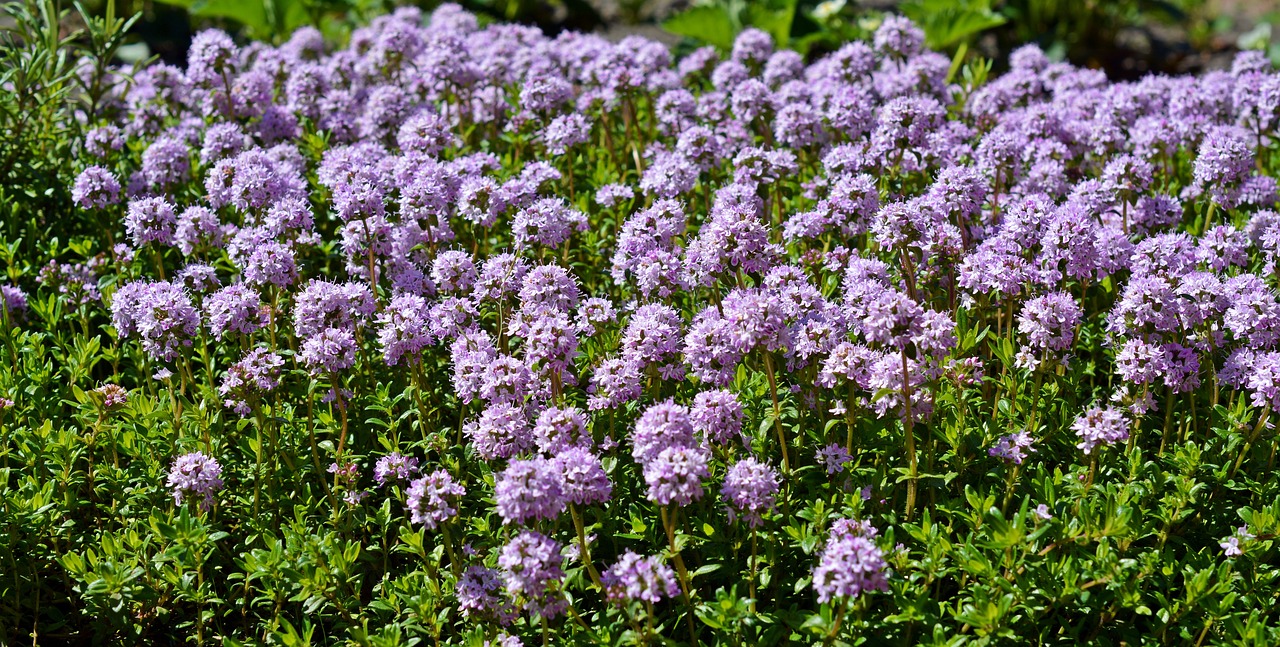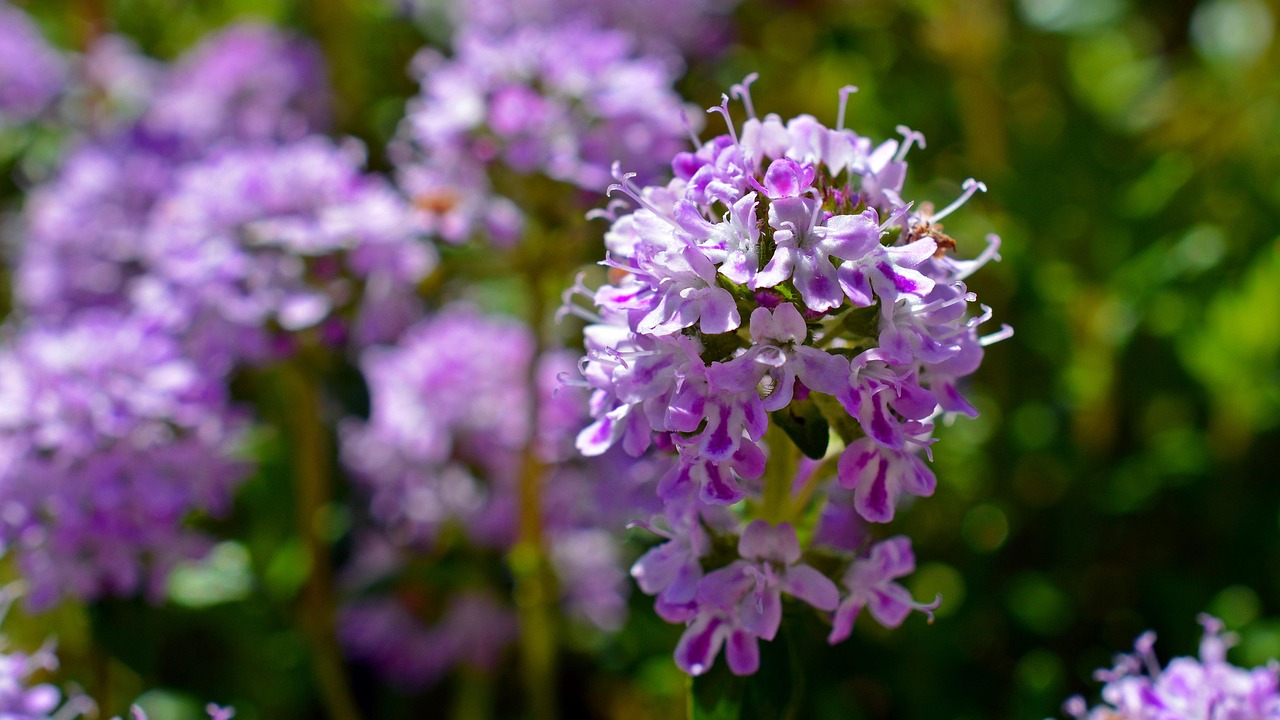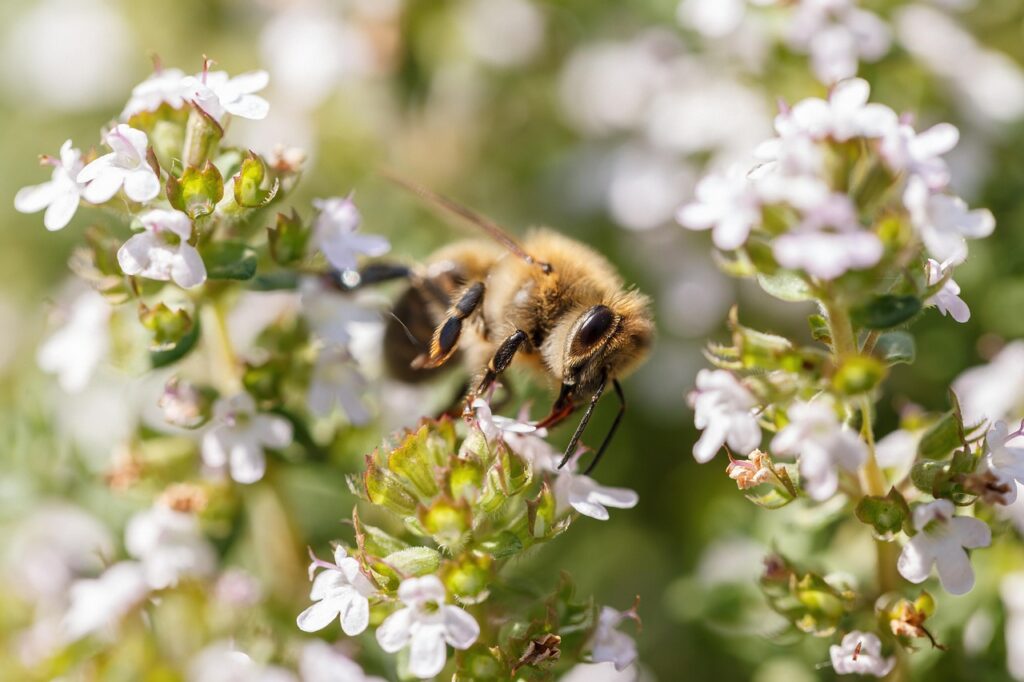Creeping thyme is a stunning, low-growing floor cover plant recognised for its fragrant, pointed blue-green foliage and sensitive vegetation. A member of the mint family, this herb prospers in complete solar and adds charm and functionality to garden beds, walkways, or bins. While not every form of creeping thyme is grown as a culinary herb, many varieties provide a nice scent and may be utilized in cooking. These plants are generally perennial in temperate climates and require minimum upkeep.

Unlike upright thyme types, creeping thyme spreads near the floor with a vine-like dependancy, making it a high-quality lawn replacement that doesn’t want mowing and can even suppress weed growth. Gardeners prize this plant for its tender texture and colorful blossoms that range from pink to red and white, depending at the species.
Why Choose Creeping Thyme?
One of the major advantages of creeping thyme is its resilience. It’s drought-tolerant, thrives in bad soil, and desires little or no renovation once set up. Whether you want to fill space between pavers, cowl naked lawn soil, or develop it in a ornamental container, this plant adapts well. Creeping thyme is likewise deer-resistant, making it a clever choice for gardens susceptible to browsing flora and fauna.

Creeping Thyme Quick Facts
- Common Name: Creeping thyme
- Botanical Name: Thymus spp.
- Family: Lamiaceae
- Plant Type: Herbaceous perennial
- Height/Spread: 2–6 inches tall, 6–18 inches extensive
- Sunlight: Full sun
- Soil: Well-drained, sandy or rocky
- Soil pH: Neutral to alkaline
- Bloom Time: Summer
- Flower Colors: Pink, white, pink
- USDA Zones: 2–9
- Native Region: Europe
How to Grow Creeping Thyme
Start creeping thyme in the spring from both seeds or nursery transplants. It grows slowly at the beginning but spreads more speedy over the years. For nursery-grown plants, area them 6 to 12 inches apart. If you are using creeping thyme as a lawn opportunity, area them nearer for a denser appearance. When planting seeds, sow them one inch aside and thin out excess seedlings.
Care Tips for Creeping Thyme
- Light: Creeping thyme desires as a minimum 6 hours of direct daylight every day. While it could deal with partial shade, flowering can be decreased.
- Soil: Ensure high-quality drainage. Sandy, rocky, or unfastened soil is ideal. Avoid planting in areas with wet, heavy clay.
- Watering: Water every 10 days in normal weather. During excessive heat, particularly for potted flora, day by day watering may be essential. Keep the soil wet but not soggy.
- Temperature/Humidity: This plant prefers drier climates. In high humidity, trim off any broken stems and increase air circulate to reduce strain.
- Fertilizer: If the soil is rich, creeping thyme won’t want feeding. In bad soil, observe a sluggish-launch fertilizer at the start of the growing season.
Popular Types of Creeping Thyme
- Spicy Orange Creeping Thyme (Thymus ‘Spicy Orange’) – Features crimson flowers; grows 2–four inches tall; suitable for zones five–9.
- White Creeping Thyme (Thymus ‘Albiflorus’) – Offers white flowers and coffee, spreading growth; flourishes in zones 2–9.
- Red Creeping Thyme (Thymus serpyllum ‘Coccineus’) – Produces brilliant crimson blooms and spreads up to 18 inches; hardy in zones 4–9.
- Woolly Thyme (Thymus pseudolanuginosus) – A tender-textured type with light pink vegetation; perfect for zones 5–eight.
Pruning Creeping Thyme
Over time, creeping thyme can broaden woody stems. To hold the plant lush, prune in early spring earlier than new increase seems, again after flowering ends, and over again after the primary frost. Regular trimming encourages sparkling, vigorous shoots.
How to Propagate Creeping Thyme
Propagation may be done via department, stem cuttings, or seeds.
Division Method:
- Use a smooth knife or spade to divide the root ball.
- Plant in fresh, properly-draining soil and water thoroughly.
- Place in a sunny spot to encourage rooting.
Stem Cuttings:
- Choose a non-flowering, wholesome stem and reduce a four–6 inch section.
- Remove the decrease leaves, dip in rooting hormone, and plant in potting blend.
- Keep the soil wet and area in direct sunlight until roots develop.
Creeping thyme is a clever, appealing choice for gardeners seeking a low-preservation, aromatic plant that adds splendor and characteristic to out of doors areas. Whether used as a ground cover or nestled among stones, this flexible herb complements any landscape effectively.
How to Grow Creeping Thyme From Seed
Starting creeping thyme from seed is a easy and profitable system. Begin interior before the very last frost the usage of a remarkable seed beginning mix. Gently scatter the seeds on the surface and gently press them in—do not cover them absolutely, as they need mild to sprout. Keep the mixture frivolously moist by means of misting with a sprig bottle, and location the tray in a brilliant, heat spot with temperatures among 65–seventy five°F. Germination commonly takes among 14 and 21 days. Once the seedlings grow approximately 3 to four inches tall, they’re prepared to be transplanted into out of doors soil or character packing containers after the chance of frost has exceeded.
Potting and Repotting Creeping Thyme
For container developing, creeping thyme flourishes satisfactory in porous pots like terracotta or clay, but any box with proper drainage will do. When the plant outgrows its pot, gently cast off it and divide the foundation ball. You can replant a element into the identical container using sparkling potting soil and area the rest in a new pot or at once into your lawn to promote wholesome new boom.
Overwintering Tips
In colder climates, creeping thyme behaves as a semi-evergreen. While it maintains maximum of its foliage, a few leaves or stems may die lower back in iciness. To protect the plant, observe a 2 to three-inch layer of mulch once the temperatures drop. This facilitates hold a regular soil temperature and guards towards freeze-thaw cycles that can damage roots.
Pests and Diseases
During hot, dry summers, spider mites can occasionally be an problem for creeping thyme. Insecticidal cleaning soap can successfully deal with both spider mites and aphids, particularly on indoor flora. However, one among the biggest threats is root rot, often due to overly wet or compacted soil. If the plant will become infected, elimination is generally the handiest solution.
How to Get Creeping Thyme to Bloom
When It Blooms
Creeping thyme usually vegetation in overdue spring or summer time, with blooms lasting around three to 4 weeks.
Appearance and Fragrance
The tiny vegetation of creeping thyme attract bees and upload appeal in your garden. The blossoms—ranging in white, purple, or purple depending at the range—bring a lovely citrusy or balsamic scent similar to their leaves.
Boosting Flower Production
Newly planted thyme typically does not bloom in its first season. For older plants that aren’t flowering, try the use of a diluted, 1/2-energy liquid fertilizer. Although thyme is not disturbing about soil vitamins, this mild increase would possibly help stimulate blooms. There’s no want to deadhead, however trimming again old woody stems at the cease of the season will promote clean springtime boom and flora.
Common Issues with Creeping Thyme
Woody or Spindly Stems
As creeping thyme matures, it could broaden leggy, woody stems. To rejuvenate the plant, prune it in overdue fall or early spring, after its first year. Avoid pulling out vintage stems—slicing them encourages healthful new shoots with out damaging the basis machine.
Yellowing Leaves or Drooping Growth
Too lots water, poor drainage, or excessive humidity can reason thyme’s leaves to yellow or brown. Reduce watering and ensure the soil drains properly. If root rot has began, dispose of the plant, trim off blackened roots, and replant the healthy portion in sparkling soil. Also, keep away from using high-nitrogen fertilizers, which could lead to susceptible, leggy boom.
Dry or Dying Plants
If creeping thyme starts to brown or dry out, it is probably attaining the give up of its herbal 4 to 5-12 months life. Harsh winters, inadequate sunlight, or fungal problems like root rot could also be accountable. Prune returned damaged stems in early spring and make certain the plant gets at the least six hours of direct daylight to help it bounce back.
Is Creeping Thyme Right for You? (Spoiler: Probably)
Still at the fence? Let’s do a short seasoned/con rundown.
Pros:
- Low maintenance
- Drought-tolerant
- Fragrant
- Bee-friendly
- Edible
- Deer-resistant
- Gorgeous blooms
Cons:
- Needs full sun
- Slow to establish from seed
- Doesn’t love heavy foot visitors
So, in case you’ve got a sunny spot and want something lovely and sensible, creeping thyme is your garden soulmate.
Conclusion: Embrace the Thyme of Your Life
Creeping thyme is one of those uncommon flora that checks almost every field—stunning, smooth to take care of, fragrant, useful, and ecologically beneficial. Whether you are constructing a pollinator paradise, changing your garden, or simply want an excuse to by no means mow again, this magical little herb has you included.
Start small, or go massive—both way, you will fall head over heels for this captivating ground cover. After all, who wouldn’t want to stroll barefoot via a blooming, fragrant carpet of thyme?
So, what are you waiting for? Let the thyme roll.
FAQs About Creeping Thyme
What are the negative aspects of developing creeping thyme?
While creeping thyme is low-protection and visually appealing, it would not preserve up nicely to heavy foot site visitors, making it much less appropriate as a high-use garden opportunity.
Does creeping thyme go back each yr?
Yes, creeping thyme is a perennial, so it reliably comes again every 12 months under right situations.
How fast does creeping thyme unfold?
Once hooked up, creeping thyme grows fast and might attain 12–18 inches extensive within 3 years.
Can you walk on creeping thyme?
It can tolerate occasional strolling, but an excessive amount of foot site visitors may additionally harm the plant over the years.

